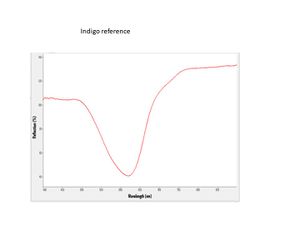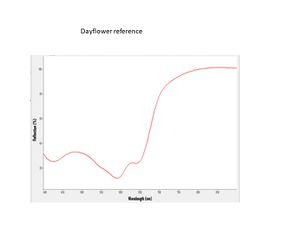FORS analysis of Ukiyo-e prints
Overview
FORS reflectance spectra can distinguish between three common blue colorants used in Japanese woodblock prints (dayflower, indigo, and Prussian blue). Greens were usually made from a combination of a blue and a yellow colorant, while purples were usually made from a combination of a blue and a red colorant. The blue colorants in these mixtures can usually be determined by FORS analysis. FORS is not usually useful for identifying yellow colorants, but can sometimes be useful for the organic reds.
FORS Reference Spectra
| Blues | Greens | Yellows | Reds |
|---|---|---|---|
|
|
|
|
Analysis
Reflectance spectra for the three common blues are show below, along with spectra of each blue from a print. The paper used in the prints typically has a slight yellowish tint, thus for the FORS analysis, an area of bare paper is used to acquire a background spectrum, which is then subtracted from the spectrum of the colored area. In principal, this gives spectra which should be more directly comparable between standards prepared in the lab and areas on prints.




















